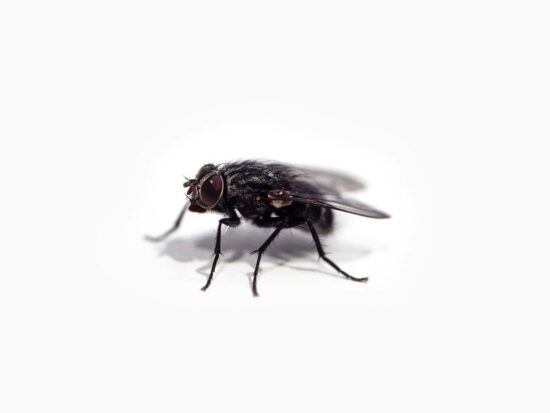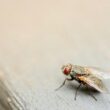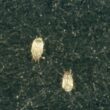House flies buzz around kitchens, land on food, and seem to appear out of nowhere. These common pests are found in homes everywhere, but most people don’t know much about how long they actually live. Many believe flies only survive for a single day, but the real answer about how long a fly lives might surprise you.
This article will reveal the facts about house fly lifespans, break down their complete life cycle, and explain what affects how long these insects survive. Understanding the lifespan of a fly can help you better manage these unwanted visitors in your home.
The Truth About How Long House Flies Live
Most people have heard the claim that flies only live for one day, but this couldn’t be further from the truth. The reality about house fly lifespans is much more complex and interesting than this simple myth suggests.
The 24 Hour Myth is Wrong
One of the biggest misconceptions about flies is that they only live for 24 hours. This myth has been around for decades, but it’s completely false. The confusion likely comes from mayflies, which are completely different insects that do have very short adult lives. Mayflies belong to a different insect group and aren’t actually flies at all.
The truth about how long a fly lives is much different than this common belief. House flies actually live much longer than most people think.
The Real House Fly Lifespan
House flies typically live between 15 and 30 days as adults. Under perfect laboratory conditions with plenty of food and no predators, some flies can survive for up to two months. However, flies living in the wild usually have much shorter lives due to weather, predators, and limited food sources.
The lifespan of a fly depends heavily on where it lives. Flies in warm, comfortable homes with easy access to food tend to live closer to the 30-day mark. Wild flies facing harsh conditions, predators, and food shortages often live only a few days to a couple of weeks.
The Complete House Fly Life Cycle
House flies go through what scientists call complete metamorphosis. This means they have four totally different life stages before becoming the buzzing adult flies we see. The entire process from egg to adult can take anywhere from one week to seven weeks, depending on temperature and other conditions.
Stage 1: The Egg Phase
Female house flies are incredibly productive when it comes to laying eggs. A single female can lay between 75 and 150 eggs at one time, and she’ll do this five or six times during her life. That means one female fly can produce up to 900 eggs total.
The eggs are tiny, white, and oval-shaped, measuring only about 1 to 2 millimeters long. They’re so small that they’re hard to see without looking closely. Female flies lay their eggs in decaying organic matter like garbage, rotting food, animal waste, or compost piles. This gives the baby flies an immediate food source when they hatch.
Under normal conditions, fly eggs hatch very quickly. Most eggs hatch within 8 to 20 hours, but in warm weather, they can hatch in less than 12 hours. Temperature and humidity play big roles in how fast the eggs develop.
Stage 2: The Larva Phase (Maggots)
When fly eggs hatch, tiny white larvae emerge. Most people know these larvae as maggots. Maggots look like small, pale worms without legs. They have hooked mouth parts that help them grab onto food and eat constantly.
During this stage, maggots have one main job: eating and growing. They feed on the decaying matter where they were laid, consuming as much as possible. The larval stage usually lasts between 3 and 7 days in warm conditions, but it can take up to 8 weeks in cold weather.
Maggots go through three different growth phases called molts. Each time they molt, they get bigger and more developed. They spend most of their time burrowing deeper into their food source to avoid predators and extreme temperatures.
Stage 3: The Pupa Phase
After the maggots finish growing, they enter the pupa stage. During this phase, the maggot develops a hard, protective shell around itself. The shell starts out brown or dark red and gets harder as time goes on.
Inside this protective case, amazing changes happen. The maggot transforms into an adult fly, developing wings, legs, eyes, and all the body parts of a grown fly. This is similar to how a caterpillar becomes a butterfly, but it happens inside the hard shell instead of a chrysalis.
The pupa stage typically lasts 4 to 6 days in warm weather. In colder conditions, it can take much longer. During this time, the developing fly doesn’t move or eat at all.
Stage 4: The Adult Phase
When the transformation is complete, the adult fly emerges from its pupal case. The fly uses a special fluid-filled pouch on its head to break through the hard shell, kind of like using a hammer. Once the fly gets out, this pouch deflates back into its head.
Adult house flies are ready to start the cycle all over again almost immediately. They can begin reproducing within just 24 to 48 hours of emerging. Their main goals are finding food, mating, and laying eggs to create the next generation.
Adult flies are gray with red compound eyes and clear wings. They have short, bristly hairs covering their bodies. This is the stage where understanding how long a fly lives becomes most important for pest control.
What Affects How Long House Flies Live
The lifespan of a fly isn’t fixed. Several factors can make flies live longer or shorter lives. Understanding these factors helps explain why some flies seem to stick around forever while others disappear quickly.
Temperature Makes a Big Difference
Temperature is one of the most important factors affecting fly lifespan and development. Warm temperatures speed up everything about a fly’s life cycle. In hot conditions, flies develop faster from egg to adult, but adult flies also tend to have shorter lives.
The ideal temperature for fly development is between 77 and 86 degrees Fahrenheit (25 to 30 degrees Celsius). At these temperatures, flies reproduce most successfully and develop at their fastest rate.
Cold temperatures slow everything down. In cool weather, it takes much longer for flies to develop from eggs to adults. However, adult flies in cooler conditions sometimes live longer than those in warm environments. Some flies can even hibernate during winter, which can extend their lives to several months.
Food and Nutrition Matter
Like all living creatures, flies need food to survive. House flies must eat at least every 2 to 3 days, or they will starve to death. They prefer foods high in calories, especially sugars and proteins.
Interestingly, research has shown that flies with unlimited access to food don’t always live the longest. Studies found that flies with abundant food sources lived about 45 days, while flies with more limited food access lived around 55 days. This suggests that having too much food might actually shorten a fly’s life.
Female flies need protein to produce eggs. Without adequate protein in their diet, they can’t reproduce successfully. This is why flies are often attracted to meat, pet food, and other protein sources.
Living Conditions and Environment
Where flies live greatly affects their survival. Laboratory flies living in controlled conditions with perfect temperature, abundant food, and no threats can live much longer than wild flies. Lab flies regularly reach the 30-day mark or beyond.
Wild flies face many challenges that laboratory flies don’t encounter. Predators like spiders, birds, and other insects hunt flies constantly. Weather conditions can be harsh, with extreme temperatures, wind, and rain making survival difficult. Wild flies also have to compete for food sources and deal with diseases and parasites.
Humidity levels also play a role. Flies need adequate moisture to survive and develop properly. Very dry conditions can shorten their lives, while moderate humidity levels support longer survival.
Real World vs Laboratory Life
Field studies show just how different real-world fly lifespans can be compared to laboratory conditions. Researchers studying flies in different environments found dramatically different survival rates:
Flies living around poultry farms typically survived only 1 to 6 days. The harsh conditions, limited food variety, and high competition made life difficult for these flies.
Flies at garbage dumps and landfills lived about 2 to 7 days. While food was available, the conditions were challenging and the quality of food was poor.
Flies on dairy farms had the longest wild lifespans, surviving 3 to 19 days on average. Dairy farms provide flies with a wider variety of high-quality foods like milk, spilled grain, and other nutritious options.
These real-world studies show that the lifespan of a fly in natural conditions is much shorter than what’s possible in protected laboratory settings.
Why House Fly Lifespan Matters
Understanding how long a fly lives isn’t just interesting trivia. The fly life cycle has important implications for homes, health, and pest control efforts.
Rapid Population Growth
Even though individual flies don’t live very long, their rapid reproduction creates serious problems. House flies can complete their entire life cycle in just one to seven weeks under good conditions. This means multiple generations can develop in a single season.
In temperate climates with moderate temperatures, house flies can produce 10 to 12 generations per year. In warmer tropical areas, they can create more than 20 generations annually. Each generation can be much larger than the last, leading to population explosions.
A single pair of flies has the potential to produce thousands of offspring in just one season. This is why small fly problems can quickly become major infestations if not addressed promptly.
Health and Cleanliness Concerns
House flies aren’t just annoying; they’re also dangerous to human health. These insects can carry over 100 different disease-causing germs, including bacteria that cause tuberculosis, cholera, and salmonella food poisoning.
Flies pick up these germs when they land on garbage, animal waste, and other contaminated materials. They then transfer these harmful bacteria to food, kitchen surfaces, and eating utensils through their feet and feeding behavior.
Flies eat by spitting on their food to dissolve it, then sucking up the liquid. This process can spread germs from their previous meals to clean surfaces and fresh food. Understanding the fly life cycle helps people realize why quick action is important when flies appear in homes.
Better Pest Control Strategies
Knowing how long a fly lives and understanding their complete life cycle makes pest control much more effective. Different control methods work better at different stages of the fly’s development.
Targeting flies during their egg and larval stages is often more successful than trying to kill adult flies. Eliminating breeding sites where flies lay eggs can prevent entire generations from developing. This approach is more efficient than swatting individual adult flies.
The rapid development time also explains why pest control efforts need to be thorough and consistent. Missing even a small breeding site can lead to new generations of flies appearing within a week or two.
Preventing and Controlling House Flies
The best approach to managing house flies combines understanding their life cycle with practical prevention methods. Since flies need specific conditions to reproduce successfully, changing those conditions can dramatically reduce fly populations.
Remove Breeding Sites
The most effective way to control flies is to eliminate places where they can lay eggs and develop. This means removing or properly managing organic waste that attracts flies.
Take garbage out regularly and use tight-fitting lids on trash cans. Clean up food spills quickly, especially sugary or protein-rich foods. Pet waste should be removed from yards promptly, and litter boxes should be kept clean.
Compost piles need proper management to avoid attracting flies. Turn compost regularly and avoid adding meat, dairy, or oily foods that flies particularly love. If possible, use enclosed composting systems that limit fly access.
Create Physical Barriers
Simple physical barriers can prevent flies from entering homes in the first place. Install screens on windows and doors, and repair any tears or gaps in existing screens.
Fans can also help keep flies away. Flies are weak fliers, and moving air makes it difficult for them to land on surfaces or enter through doorways. Many restaurants use air curtains at entrances for this reason.
Sealing cracks around windows, doors, and other openings reduces the number of entry points flies can use to get inside homes.
Maintain Clean Environments
Regular cleaning removes food sources and potential breeding sites before flies can take advantage of them. Wipe down counters and tables after preparing food, and don’t leave dirty dishes sitting out for long periods.
Keep food stored in sealed containers rather than leaving it exposed. This includes pet food, which can be very attractive to flies. Clean spills in pantries and around pet feeding areas promptly.
Pay special attention to areas where moisture and food particles can accumulate, like under appliances and in corners where crumbs might collect.
Conclusion
The next time someone claims that flies only live for 24 hours, you’ll know the real truth. House flies actually live between 15 and 30 days as adults, with their complete life cycle taking anywhere from one to seven weeks depending on conditions.
Temperature, food availability, and living conditions all play important roles in determining exactly how long a fly lives. Laboratory flies with perfect conditions can survive up to two months, while wild flies facing predators and harsh weather often live only a few days to weeks.
Understanding the lifespan of a fly and their rapid reproduction cycle explains why small fly problems can quickly become major infestations. Female flies can lay up to 900 eggs in their lifetime, and multiple generations can develop in a single season.
This knowledge about how long a fly lives isn’t just interesting science. It’s practical information that can help you better control these pests in your home. By eliminating breeding sites, creating barriers, and maintaining clean environments, you can break the fly life cycle and keep your home more comfortable and healthy.
Remember, while individual flies might not live very long, their ability to reproduce quickly means that prevention and early action are always better than trying to deal with a full infestation later.


